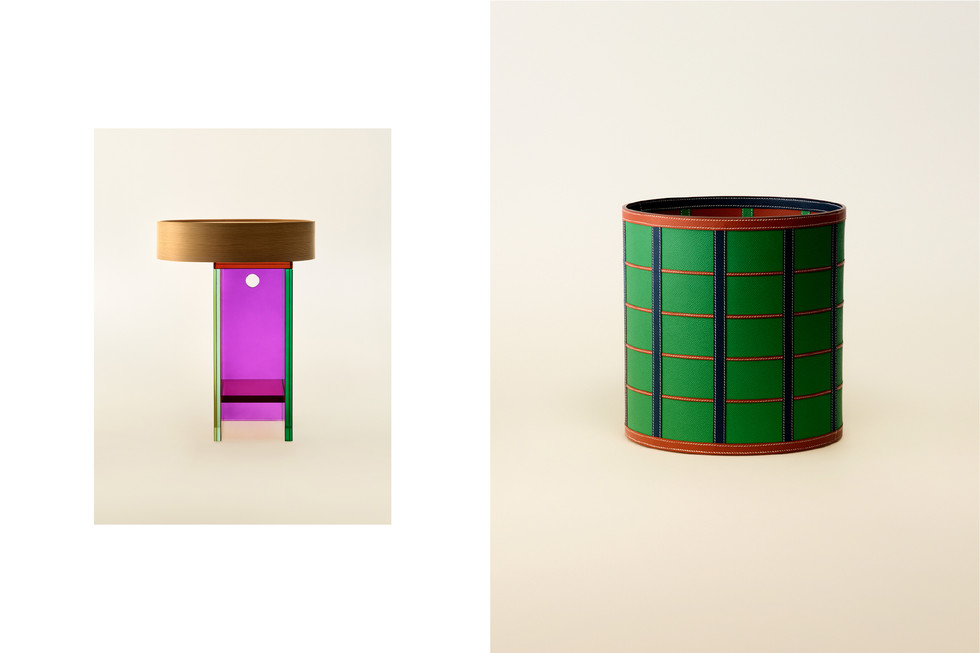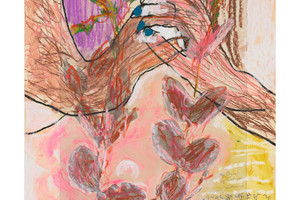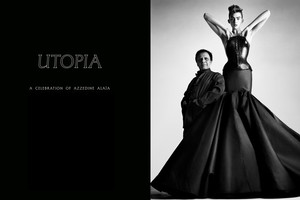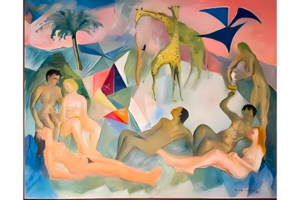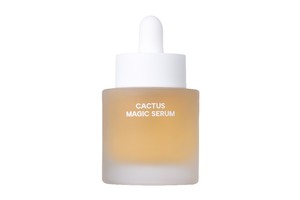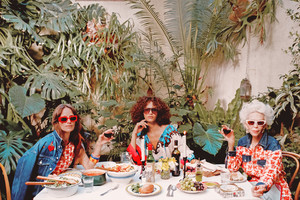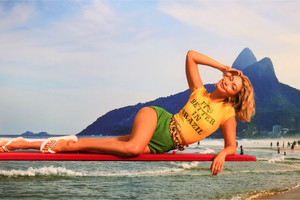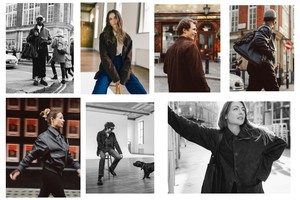Edit Sihlberg - “Painting is a way of being present.”
Written by Natalia MunteanFor Swedish artist Edit Sihlberg, painting is both process and presence - a form of attention, a kind of listening. Her paintings have a subtle choreography of colour and atmosphere: flowers wilt, shells whisper of time, and objects dissolve into strange, delicate dreamscapes.
Since Sihlberg graduated from the Royal Institute of Art in Stockholm, she has exhibited at venues including Artipelag, Uppsala Art Museum, and now Saskia Neuman Gallery, where her latest solo show, Windings, continues her exploration of still life, memory, and the poetic in the everyday.
“I want to feel free. I want to feel like I can do whatever I want within my practice,” she says. In her studio, there is no fixed plan, only a deep commitment to the act of discovery.
Natalia Muntean: Your current exhibition at Saskia Neuman Gallery is titled Windings. Can you tell me why?
Edit Sihlberg: Windings was my attempt to capture a certain abstract feeling I wanted to run through the exhibition. I didn’t have a specific image in mind, it was more about creating a mood or atmosphere. Like when you hear a song and it evokes a whole world, a sense of something fleeting or melancholic. That’s what I wanted the paintings to do.
NM: What kind of feeling was it?
ES: I’m not sure if “feeling” is the right word, but it’s the closest I can get. I wanted it to evoke a sense of being in a moment. You know when you listen to a song and you get this sense that it captures a certain world? I wanted the feeling to be a bit strange as if you’re in a movement, but also somewhat silly. I wasn’t exactly sure what I wanted, which is part of the creative process.
I think that’s what makes painting both fun and challenging. I aim to create paintings that establish their own worlds. While you can look at them and see flowers or still lifes, some of them may be called beautiful, but that’s not my primary goal. I want to create an atmosphere - that’s the right word.
NM: So you build a world with your work?
ES: Yes. I start with wanting to create a certain atmosphere; that’s my entry point. Usually, I build a still life to create a form of foundation for my process. I stay open to discovering something as I go along with the painting.
NM: You mentioned you didn’t have a specific plan when you began this exhibition. Instead, you allowed yourself to be guided by your impulses. Do you simply paint and see what emerges, or do you have a clear image in mind from the start?
ES: I work with the ambition to capture a feeling I’m experiencing in the present moment. This emotion becomes the essence of the atmosphere in which I see colours, compositions, and perspectives moving. It’s where the aimless and intuitive meet a core that shapes a visual language. Sometimes, recurring elements and objects appear - sheets of paper, transparent glass, seashells, and letters. The atmosphere encapsulates it all, reflecting something that cannot be put into words.
NM: Have you always worked like this - starting from a feeling and building a world around it?
ES: I think I have, but I didn’t put words on it at first. In one way, I still feel like I’m just learning to paint. And while doing that, it has to be meaningful to create things. So putting down a certain atmosphere is a way to put meaning into them. I’ve tried to do that from the beginning.
NM: What were some sources of that feeling for you?
ES: That’s the whole mystery, the mystery of painting. I think that’s what I find fascinating about my process too.
NM: You said earlier that you sometimes surprise yourself when painting. Can you tell me about a moment during this show when that happened?
ES: The surprise can be in putting an object into a painting or trying out colours I didn’t plan. One painting that I surprised myself with is called Ljusstrimma (Streak of Light). I wasn’t sure how I wanted it to look. It’s a good example of the process: you have an idea, but not completely, not until you’re inside the painting. Then you have to figure out: what does the painting need to have its own personality? I experimented a lot with that paper. Tried out colours, and also put things in, like a fossil, and drawings of shells. I painted over different drawings, repainted, and just tried things out.
NM: Do you make different variations of the same painting?
ES: Usually not. I think it’s a good way of figuring out why a painting becomes interesting. Like, what it is that makes it work. So I think I should repeat a motif again and again, but I’m usually too restless to do it.
NM: Do you have any rituals or a schedule that helps you start the painting process?
ES: I make sure I have a clean palette and put out a lot of different colours: one warm and one cool of every colour, like two blues, and two reds. It’s not easy to begin and sometimes I use a timer to trick myself. I set it for 35 minutes and tell myself - “at least 35 minutes of painting today”. And if I do that, I can be done. But of course, I never stop after 35. It’s just a way to start.
NM: Your work has some contradictions - there’s humour, but also intimacy and distance. Do those reflect how you see the human experience or memory?
ES: It’s like… a human experience. Or my human experience. And it makes the painting process more fun to add humour. But it’s also a way of pointing to the opposite of humour. It’s hard to put words into it, but everything is a contradiction.
NM: Is that something you’re always interested in, the duality of emotions, or was it specific to this show?
ES: I guess I’m always interested in it. But it’s easy to think that others see things as you do or experience them. I believe art is interesting to everyone. But maybe it’s just part of being human, dealing with contradictions.
NM: Your paintings can feel voyeuristic: intimate, but also distant. How do you create that in your compositions?
ES: I think that being present while painting leads the viewer into an intimate experience. I believe the act of painting is quite exposed. If someone paints in a particular mood, it becomes apparent. That’s where the intimacy comes in. Also, being close to a subject invites the viewer to look, even if they don’t always understand what they’re observing or what kind of world they’re in. Then there’s the element of distance. We create distance when we don’t fully understand when we wonder if we’re welcome in that space or not. I’m thinking out loud now, but I suppose that’s a way of creating both distance and intimacy at the same time.
NM: Are you critical of your paintings?
ES: I’m both. I’m trying to be. I don’t feel exposed because I work on them until I feel they’re no longer a part of me. The answer to the question of knowing when a painting is finished, I believe, is when it has its own body and personality. They are their own.
NM: Do you go back to your paintings and change them?
ES: Yes. I try to be brave and not scared to paint over something. I want to feel free, not owned by my paintings. So a big part of feeling free is also being able to destroy a painting or try out things, knowing that all the effort I’ve put in might be lost if it doesn’t work. If a painting never feels good enough, almost there, then I can experiment with it and try things I wouldn’t otherwise.
For this show, the big black painting called Dötid looked very different before. It was a big mirror. I didn’t know what to do with it, so I added things. Then I was just like, “Okay, I’ll make a black background instead of this mirror.” So it ended up looking completely different. I try things. I might have a plan within the still life I build, I can put a lot of effort into trying different setups. But I want to stay open. I can paint the still life with the idea that it will look similar to what I see, or that it’s just a kind of foundation - something I don’t yet know and want to figure out in the painting. Those are usually the paintings I repaint - changing colours, trying things. Some stay close to the actual still life, to reality, or the original idea.
NM: You sound very relaxed about changing your work.
ES: I’m not. But I force myself to be able to feel relaxed. Because I want to feel free, to feel like I can do whatever I want within my practice. I think that will lead to better paintings in the long term. The painters I admire, their work has a sense of freedom. That’s what I aim for, even if I feel far away from it. It’s something I want.
NM: When you say you want to be free, what does that mean exactly?
ES: To not act on fear, but on desire, to have a language within colour or painting where you’re free to improvise. Like in dancing or playing music - when you know your instrument, then you can improvise. That’s what I mean. To be free, to be able to act on impulse more than fear, more than trying to be correct.
NM: The flowers in your paintings often appear to be falling or drooping. Is that deliberate? What did you want to say about it?
ES: It’s many things. It’s beautiful, but it’s also about time passing, not being in full bloom. It’s a melancholic way of looking at flowers. I think you have to be close to your feelings as a painter, depending on what you’re interested in, of course, but if you reflect on your inner self, you have to notice your own emotions. I guess that makes you a bit melancholic.
NM: You also use shells and fossils in your work. Do they have personal symbolism, or something more universal?
ES: I find them beautiful. They have such a long lifetime. And being so old - that’s interesting. Their shapes too. I realised a few years ago I didn’t have any shells in the studio, so I started buying them secondhand and now I enjoy painting them. Each of them is unique, but the shape of the spiral is deeply integrated into humanity and nature. There is an endless tradition of using that shape in art from all ages. There’s a feeling when you hold a shell - you know it has a history.
NM: Your paintings have an air of “dreamlike scenarios”. Do you draw from your dreams or your subconscious?
ES: I haven’t tried putting a dream literally on canvas. But in one way, yes, it’s like something subconscious comes through. I think it can be just freezing a moment and looking at it - that can be dreamlike too. Like in a film when it goes into slow motion. That feeling when you almost grasp it, but don’t.
NM: If we go back to the theme of fleetingness and trying to freeze a moment - how did that come about? You talked about inspiration from painters, but was there more?
ES: It was at that moment I realised it felt more real when I was present in the painting process. Now I’ve learned a bit about how to get there. In the beginning, however, I couldn’t be present unless I was painting from reality. It takes time; you think you see, but it takes a while until you see. It took time until I truly understood what I was looking at - how colours shift, how something looks. So, it was both a choice and a necessity. I realised I wouldn’t be able to paint unless I did it with something tangible. Now I also paint from photographs and I want to be able to paint from fantasy too. But looking at something real is a way of returning to the source of why I paint, where the act feels most genuine.
NM: When you say “present,” do you mean with your thoughts or your feelings?
ES: Just being immersed in the process, more intuition than thinking. Painting, for me, is a way of being present.
NM: Some of the brush strokes seem more maybe spontaneous, and others are a bit more thought through. Can you walk me through how you build a painting?
ES: I guess that also reflects my personality coming through in many ways. The brush strokes, for example - wanting to do it correctly, then sometimes being able to let go and just let myself be led by intuition.
NM: In 2022 you received the Hilding Linnqvist Prize and Anna-Lisa Thomson Scholarship for Art, how do you think your approach to painting shifted or changed since then?
ES: I could give up my extra job, and being in the studio full-time was a big shift. Finishing school was also a big change. I was a bit intimidated by being on my own at first, but then I realised it was a relief and what I needed. Being full-time in the studio allowed me to focus on painting and I have to practice constantly. If I have a long break from it, it takes time to get back into the process. Since finishing school and with those grants, I’ve been able to keep the motor alive, continue to paint, and stay in the process.
NM: You were part of exhibitions at Uppsala Art Museum and Artipelag - I Follow the Sun. How do you think Windings builds on or departs from those works?
ES: When I knew, just over a year ago, that I would have a show here (Saskia Neuman Gallery), I thought of using those paintings from Artipelag - I Follow The Sun at least one of them, to hook into Windings, the next series of paintings. I did something new, incorporating pencil and text in the paintings, and taking notes. I thought that was fun, so I would like to explore it more. It was also a way of working with this exhibition with notes and fragments of text.
NM: What do you hope viewers take from Windings?
ES: What a hard question. I hope viewers have some kind of reaction or that it awakens something in them; that would be nice.
NM: How would you want your work to evolve in the future? Where would you want to take it?
ES: Not knowing where it would go. It would be nice if it happened.
NM: You’re not scared of that?
ES: No, not at all. That would be amazing. I'm someone who digs where I stand, but I’m trying to do yoga with my mind. Philip Guston's early works are amazing, but then he moved into his abstract period, and later, back to the figures he’s most famous for. At all times, his paintings felt authentic, but you could never guess what he would paint in the future. Not many artists have that quality. I will probably do about the same thing as I am doing now, but it would be fun to explore something new and try out new things. The most important thing to me is being authentic in what resonates within me.
NM: What does it mean to be authentic for you? In your case, when it comes to your painting.
ES: That's also a bit of a mystery, but you know when it's true; you just know it. I suppose it’s about not trying to be someone else, even though you can be inspired by others. It's not about doing it for someone else's sake, even if it may seem like that sometimes. The only person who can create what I create is me, and otherwise, it would be kind of pointless to try to be someone else or to create what someone else would find interesting. That’s why I love viewing paintings that feel true; they reflect our shared humanity. Another person has made this, and through that authenticity and agency, a connection is formed. You feel something happen. Being authentic means being able to share something with others, to relate to other people and that they can perhaps relate to your work as well.
Portrait by Hugh Gordon and installation images by Carl Tillberg












